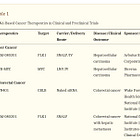Open Source Genetic Engineering for possibly 7 figures or less.
Follow up to An Actual Expensive but Real Inactivator of Pfizer and Moderna Injections
This is a follow up to my article about the recent advertisement of siRNA (Small Interfering RNA) as a treatment for mRNA vaccine injuries.
The principle of siRNA is that by having small segments of interfering RNA, the transcription of Pfizer or Moderna mRNA and all the consequences can be stopped.
However, small interfering RNA will also interfere with the cell’s normal mRNA causing untold cancerous, inflammatory, and gene altering side effects. (Exactly the same problem with the original COVID mRNA injections)
A better way to inactivate Moderna or Pfizer mRNA without interfering with all the normal mRNA a cell uses was the topic of my subsequent article:
(Making custom RNA was expensive and tedious work back in the 90’s. So I thought the process of how Moderna or Pfizer should be inactivated using anti mRNA not siRNA would also be incredibly expensive.)
Well it turns out making anti RNA to the Pfizer or Moderna’s patented COVID mRNA isn’t that expensive after all.
It is well within the reach of anyone with 7 figures to spare (or borrow).
Depending on your budget, the absolute cheapest option would be to just order anti-mRNA from one of the existing DNA and RNA synthesis companies.
Depending on the length of antiRNA you order, the price will be different.
https://sg.idtdna.com/pages/products/custom-dna-rna/custom-rna-oligos/rna-oligos
Here's another existing synthesis company. https://www.genewiz.com/en/Public/Services/Gene-Synthesis/Custom-mRNA-
You have to send them the sequence and get quotes for a price.
The sequence you’d order is the Anti Sequence of the Moderna (elasomeran) .
or Pfizer BNT162B2 that you can look up from the links I list in this article:
Genetic Engineering with Dr. Nagase
Here we will look at how the mRNA sequences for pfizer and moderna’s COVID'-19 injection can cause problems with the human gene Line-1. First let’s look at the code of Line-1: (Sequence taken from the national library of medicine - where you can find multiple versions and fragments of LINE-1. I picked the longest version, as that’s least likely to have m…
The full listed sequence for Elasomeran (Moderna) is 4100 base pairs, and Tozinameran (Pfizer) is 4283 base pairs. I don’t recommend ordering the entire anti sequence for either of the two unless you have a lot of money to burn. The advantage would be the anti sequence you order would be the most specific to bind to any Moderna or Pfizer mRNA in your body thereby rendering it inactive (hopefully permanently). How many base pairs long would the anti sequence have to be? Probably the most effective would be the anti RNA to the spike protein code section of the Pfizer or Moderna.
Prices came way down over the past ten years, in the first link it's about 100 usd per base pair, so a segment of anti mRNA 60 nucleotides long would be about $6000USD
If you really want the whole machine to print segments without having to send the sequence to a 3rd party there's this:
https://www.dnascript.com/
I didn’t email them to see how much a machine would be but I imagine 7 figures would be plenty.
Once you get product from the Synthesis lab, or make your own, you need to do a quality check with a sequencer to make sure you have is the exact anti mRNA code that you wanted.
https://www.illumina.com/systems/sequencing-platforms/miniseq.html
https://www.genengnews.com/topics/omics/top-10-sequencing-companies-2/
Check the bottom of this article. An Illumina sequencer for $19,900.
Once you have the anti RNA, then you have to get it into the cell with some type of lipid nanoparticle. This is because naked RNA gets destroyed quickly in the blood.
As I don’t think Arbutus Pharma or Acuitas will sell you the lipid nanoparticle they use for the COVID injections, you’ll have to make your own.
There’s a number of detailed papers out there on various methods of making lipid nanoparticles. Making LNP’s is basically shaking or stirring Lipids (fat or oil) in water or saline at a specific speed and intensity to get little nano bubbles of oil. If the type of phospholipid or hydrophillic oil is correct the bubbles of oil will have a little sphere of fluid within them.
To put the RNA into the oil bubbles, just mix the RNA into the saline or water solution first and then add the oil and agitate until the oil droplets all have a little sphere of fluid containing RNA inside.
The last step of making lipid nanoparticles requires a lot of trial and error, but a lot of the recipes that do work have been published.
Good Luck!
(I have no shares or financial interests in any of these companies. I’ve been out of the Cell biology field for over 2 decades)



https://scholar.google.hu/citations?user=7K0znHwAAAAJ&hl=en
So happy to report that this is not an issue for some of us. Right, Control Groupees?